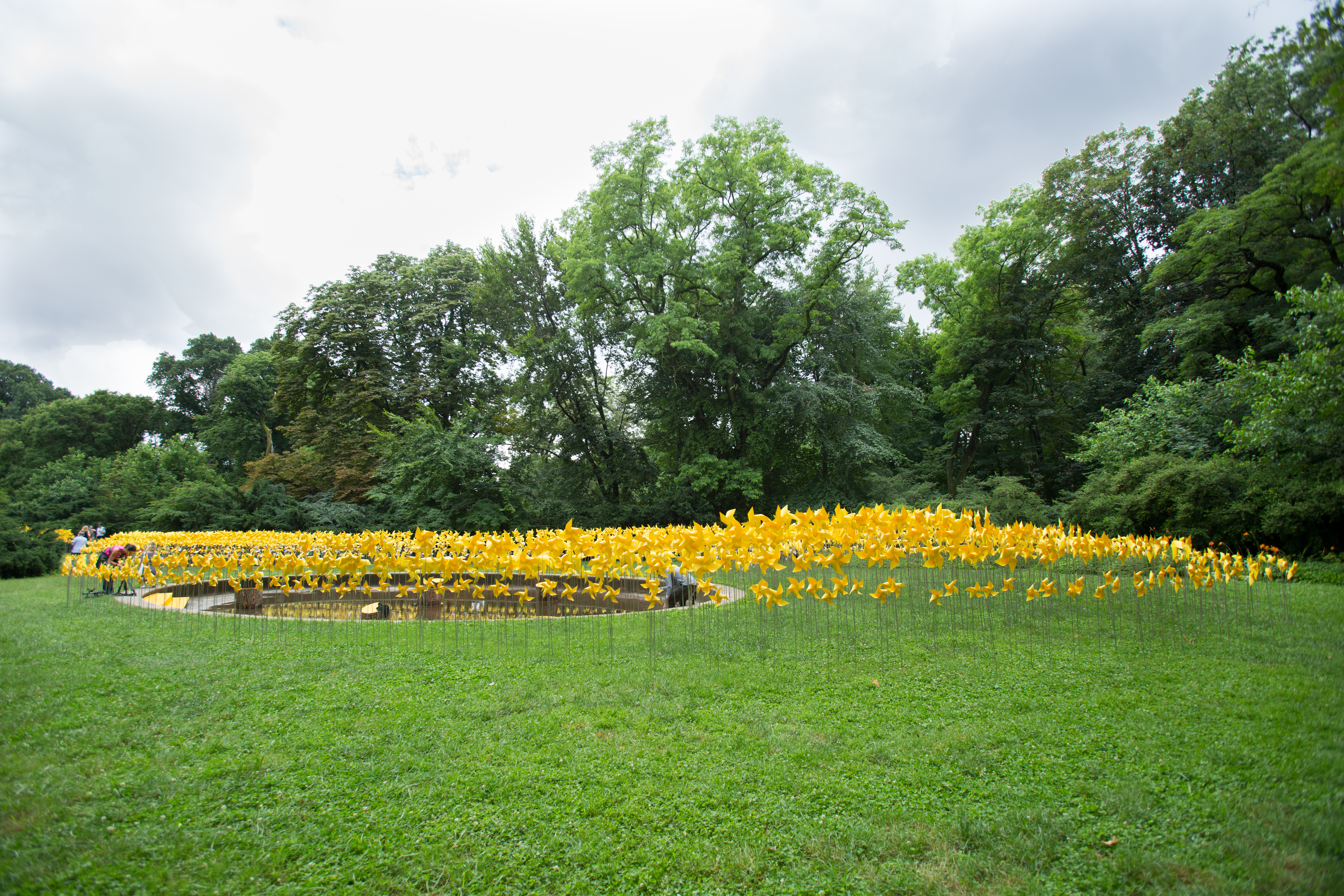
The thinking in our office is borderless—architecture, design, it even starts with the first architecture: what you wear,” says Suchi Reddy of her Manhattan-based architecture firm, Reddymade. For Reddy, who grew up in Chennai, India, that borderless, interdisciplinary nature of her work was informed by the rich, color-saturated visual lexicon of her childhood. “My mom wanted to weave her own saris and we’d go to Kanchipuram, which was famous for its gold-inflected silks,” she recalls. “We’d meet the weavers and pick the colors. Of course I absorbed all of this—and now as an architect, I have a huge yen for textiles.”
Reddy is known for her holistic and comprehensive architecture and design practice, the stylistic narrative of which masterfully spans from Modernist to the avant-garde and is as expertly executed from the inside as the outside. “I can’t see one without the other,” she concedes. Reddy, above all, has a panache for visual surprise.
A recent public work in which Reddymade was hired to commemorate the 150th anniversary of Prospect Park is a testament to the inseparable tactile interface of her designs. For the project, titled Connective, Reddy created an undulating path of over 7,000 bright yellow colored pinwheels, the folded interiors of which revealed artwork submitted by neighborhood residents. “Wonder is a thing I love,” she says of the project. “I like to have that feeling if I can.”

Other current projects include an addition to a residential property in the Hudson Valley in collaboration with Ai Weiwei, which they approached both “intellectually and simply,” she says. Her residential projects, which can be found around the globe, display her encyclopedic, chameleon like propensity to surprise. “I never want to do the same thing twice,” says Reddy. “I think people come to us for something that isn’t sterile—a place needs to support both soul and mind, in whatever combination will bring spirit into a space. We explore what kind of poetry we can pull out of it.”
Reddy draws heavily on contemporary art and design for inspiration. “I love artists working with old and reinventing with new; I tend to like work that is architectural in nature,” she says, citing Gerhard Richter, Roni Horn, Kara Walker, Bruce Nauman and Yinka Shonibare as artists who particularly inform her work. And, she is “hugely inspired” by great contemporary designers whose work toes the line between collectible design and art, including the ethereal mobile-reminiscent lighting of Michael Anastassiades, Ian Stell’s shape shifting furniture and Wonmin Park’s sculptural confections.
It has always been a dogged curiosity that propels Reddy to revel—and succeed—in distilling all of these disparate visual layers and technical knowledge in her work. The success she has achieved as a female Indian architect with global renown was certainly not a forgone conclusion. She credits very encouraging parents, in particular her mother who “wanted her daughters to have careers.”

Having come to the U.S. newly married at age 18, Reddy had to push back against the conservatism foisted upon her by her new in-laws. “I had to fight to go to architecture school and not just stay at home and have babies,” says Reddy, who got her degree in architecture at the University of Detroit, and subsequently spent years “sleeping under her desk,” working at places like Arquitectonica (“an amazing, crazy time”), Polshek Partnership and Gabellini Sheppard before starting Reddymade in 2002. “It defied all of those things, especially as an Indian woman—you’re not trained to say no. It’s not a polite thing, you’re raised to see how to accommodate people.”
Reddy doesn’t like to qualify herself as a female architect, though. “I think making gender distinctions in terms of how work gets done doesn’t make a difference, but being taken seriously—you have to work harder,” she says. “Contractors—they love to call you a decorator. That’s the box you want to put me in? Okay, got it.”
Reddy is obviously no shrinking violet. “I’ve had to channel all the goddesses in my culture. I am going to wave my 100 arms and you’re going to listen to me!”



